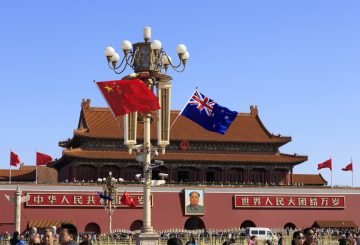亚洲新西兰基金会(Asia New Zealand Foundation)最近的一项调查显示,当新西兰人想到亚洲时,中国是第一个想到的与食物密切相关的国家。但是,对中国的情绪好坏参半,37%的人认为中国具有威胁性,30%的人认为中国是友好的。
这项名为 “新西兰人对亚洲和亚洲人民的看法” 的调查包括2323名15岁及以上的参与者。它涵盖了各种主题,包括亚洲对新西兰的重要性、亚洲政治、安全、经济以及与旅行、美食和娱乐相关的常识。
主要发现:
- 80% 的新西兰人认为加强与亚洲的政治、经济和社会联系至关重要。
- 90% 的受访者认为新西兰投资与亚洲建立伙伴关系至关重要。
- 75% 的人支持通过贸易加强新西兰与亚洲的关系,71% 的人支持与亚洲国家的政府交流。
- 87% 的参与者喜欢亚洲美食。
- 78% 的人更喜欢将亚洲作为旅游目的地。
- 59% 的人对亚洲音乐、艺术和文学表现出兴趣。
在安全方面,63%的人对东亚潜在的军事冲突表示担忧。人们对未来几十年亚洲对新西兰的影响前景总体乐观,但也有人担心亚洲的政治和安全事态发展会影响新西兰。
在友好度方面,日本、新加坡、韩国和菲律宾等国家排名靠前。自2021年以来,对巴基斯坦、越南和印度尼西亚等国家的情绪有所改善。尽管有49%的新西兰人认为印度是友好的,但俄罗斯和朝鲜被视为重大威胁。
一半的参与者认为他们对亚洲有很好的了解,高于2013年的33%。但是,对于媒体对亚洲的报道,人们的看法好坏参半,有些人认为报道太多了,有些人认为报道太少了,另一些人则认为它是平衡的。
亚洲新西兰基金会成立于1994年,旨在帮助新西兰人增进对亚洲的理解和联系
。






























































